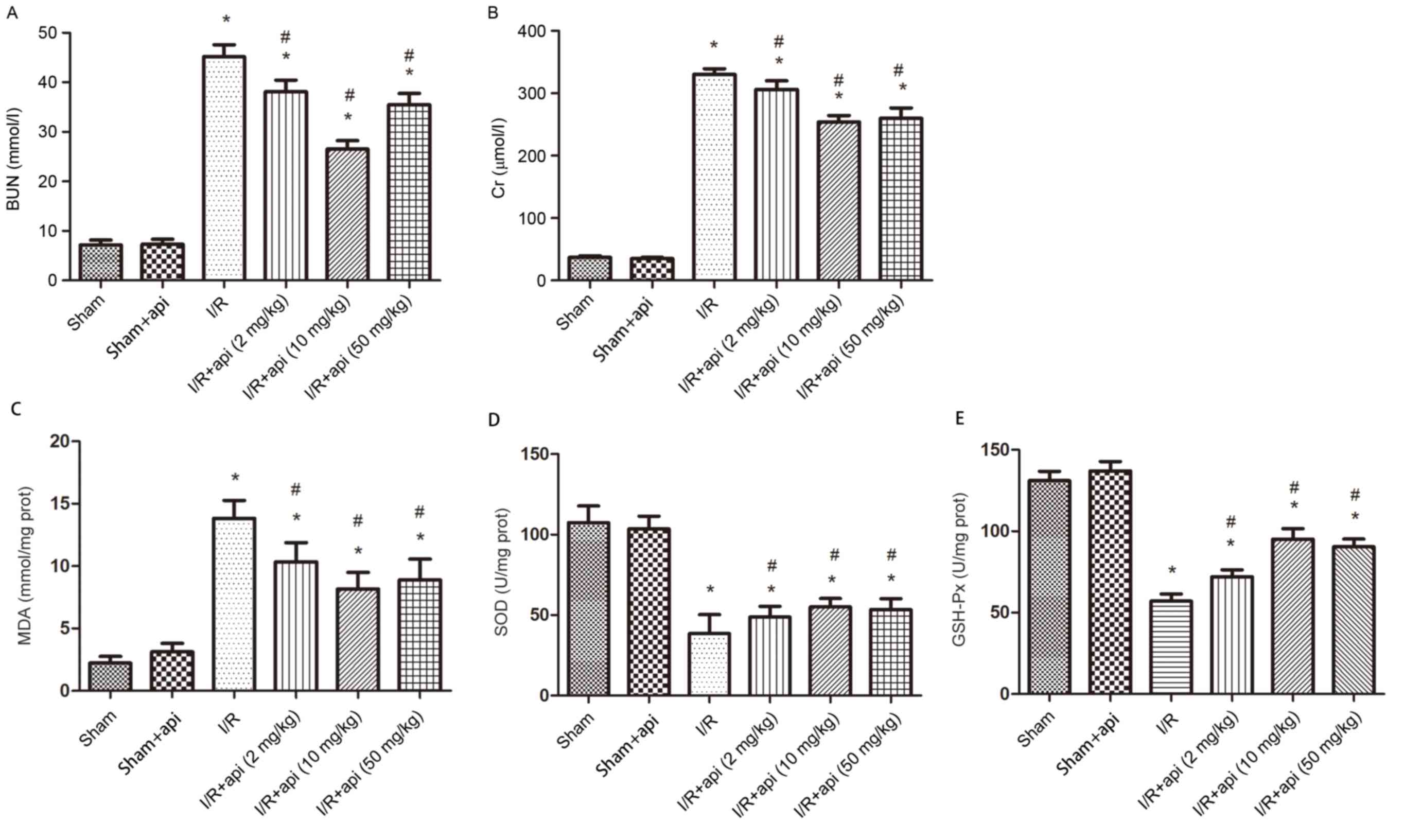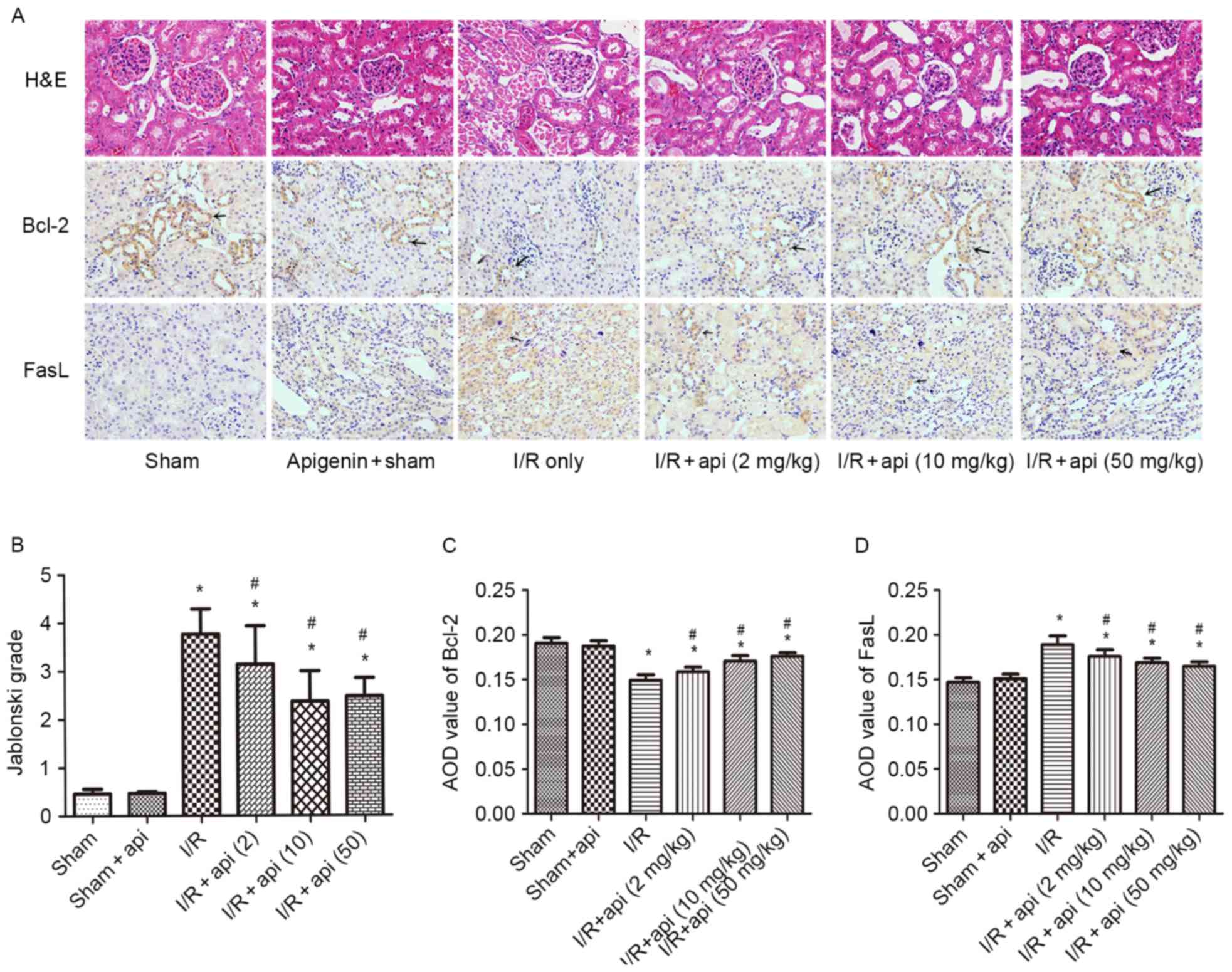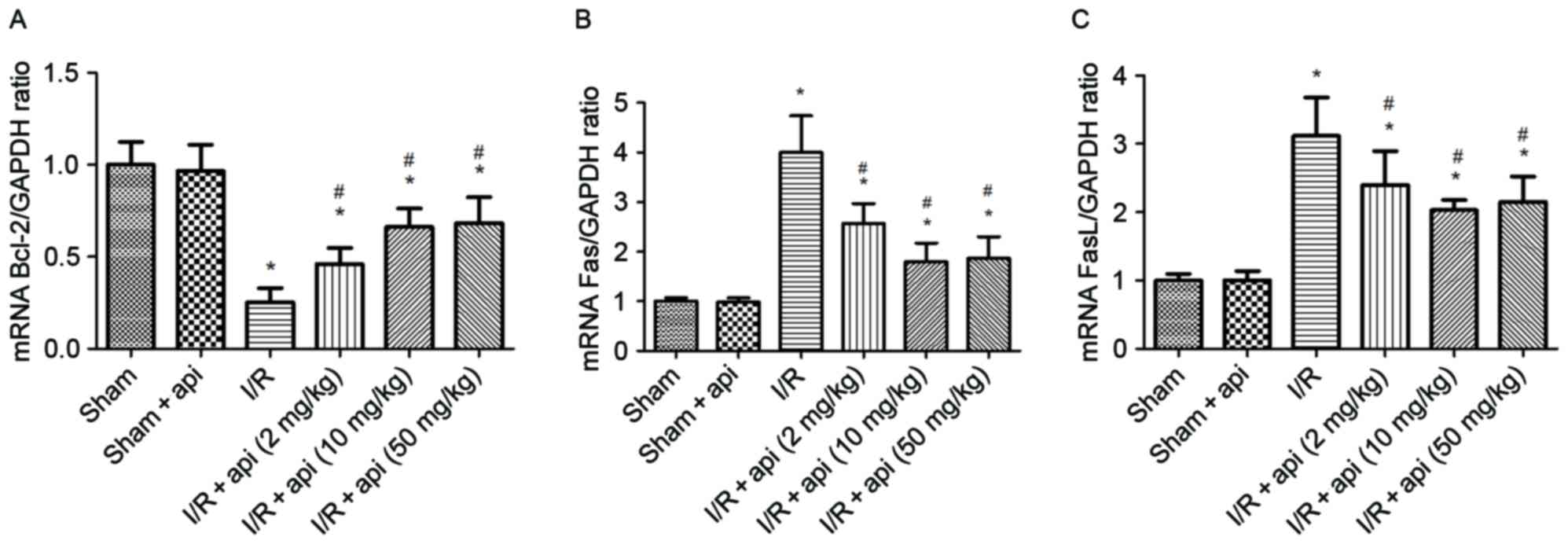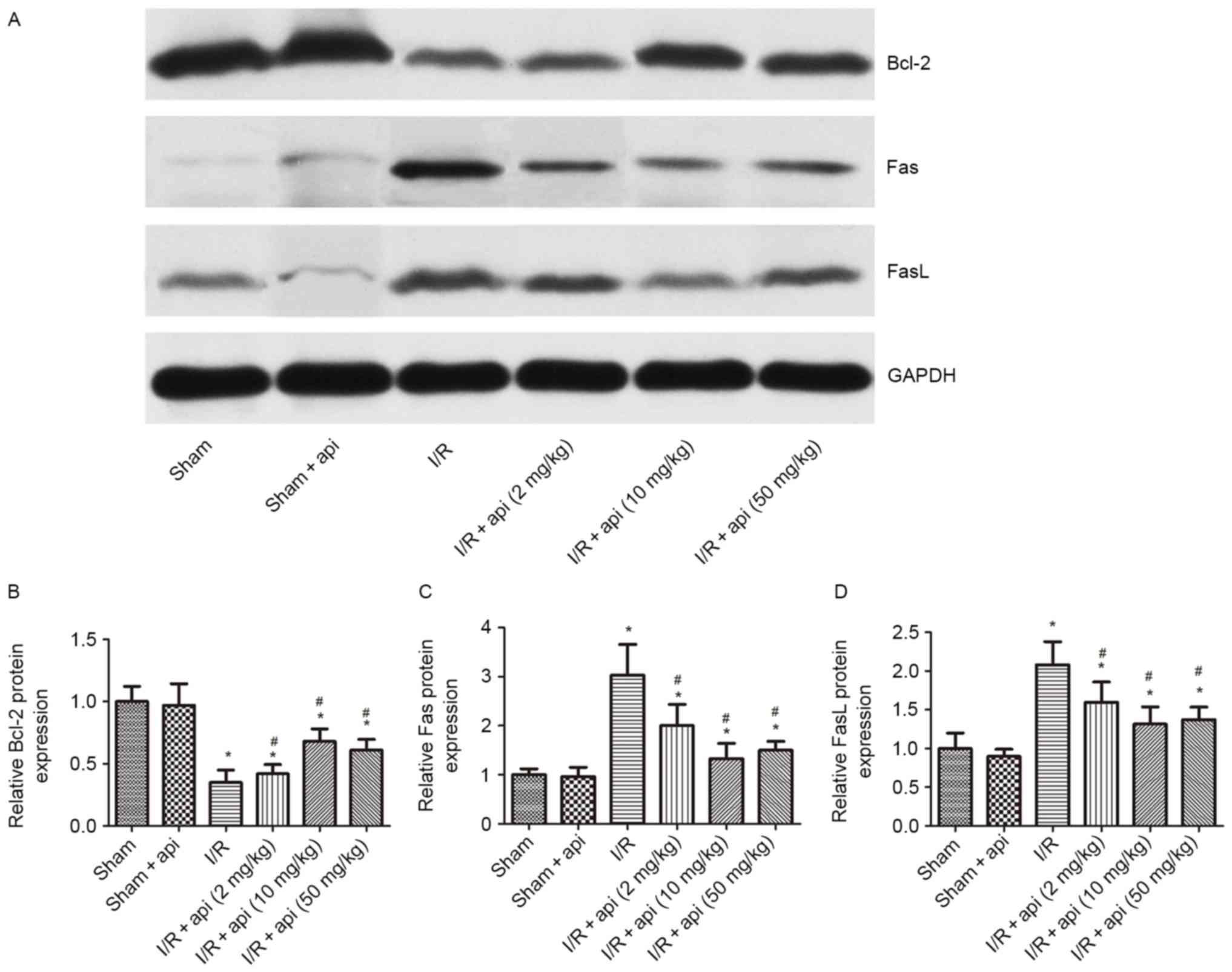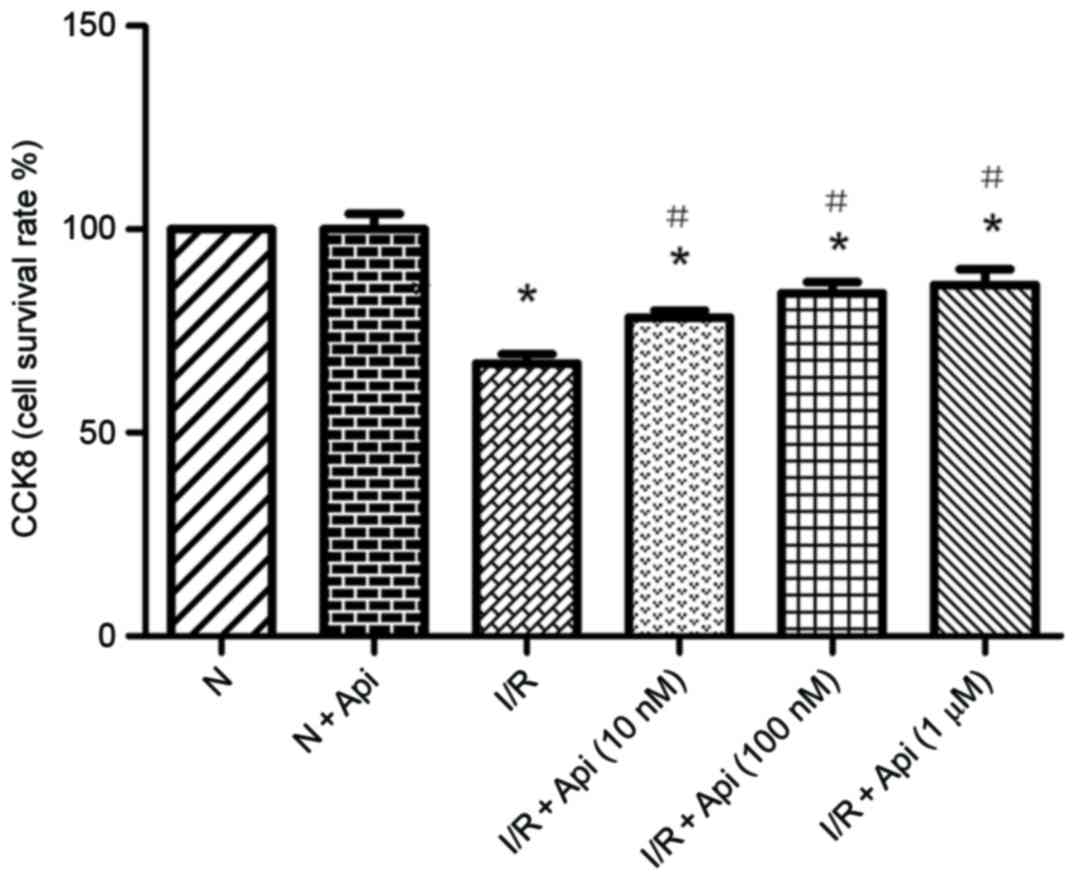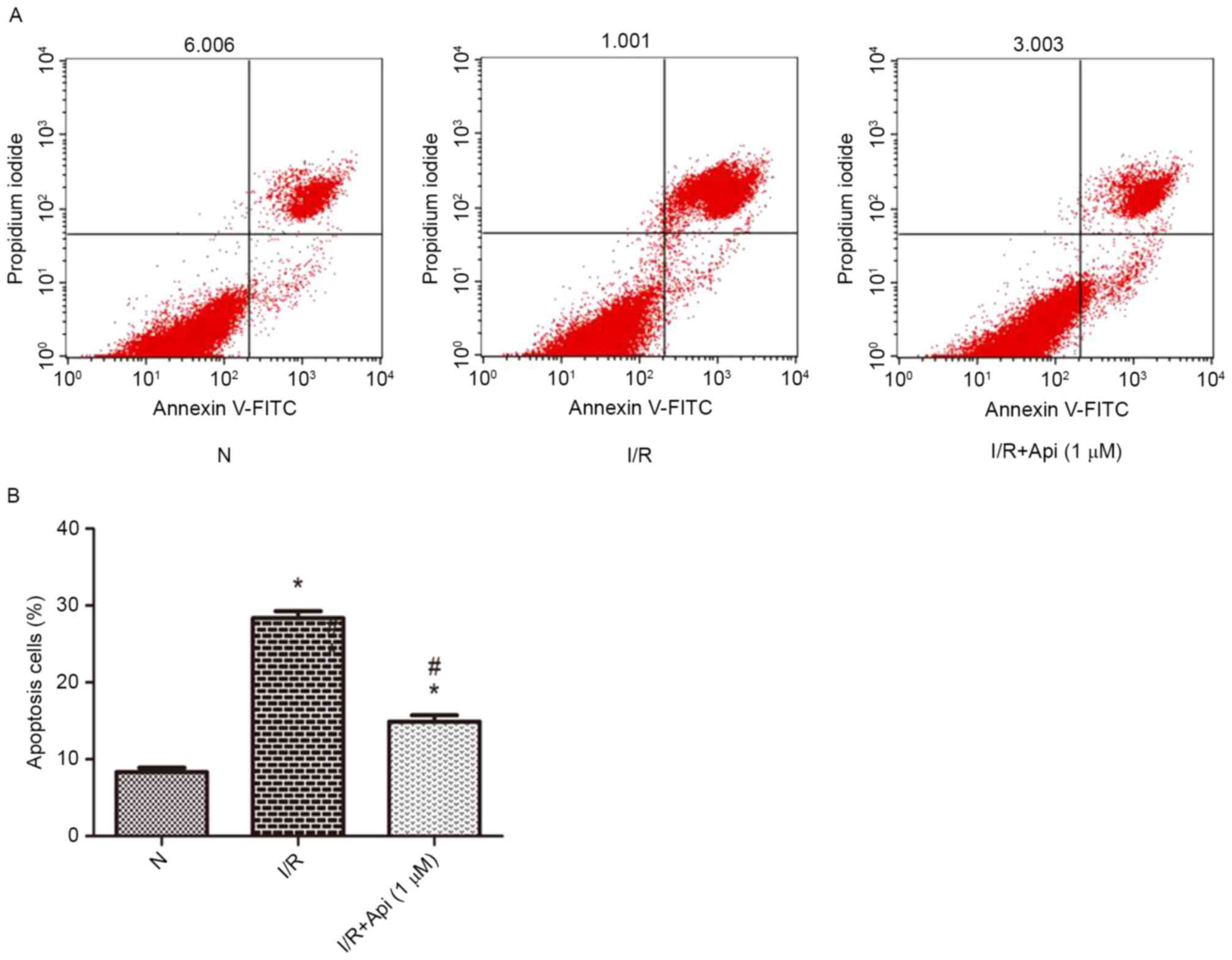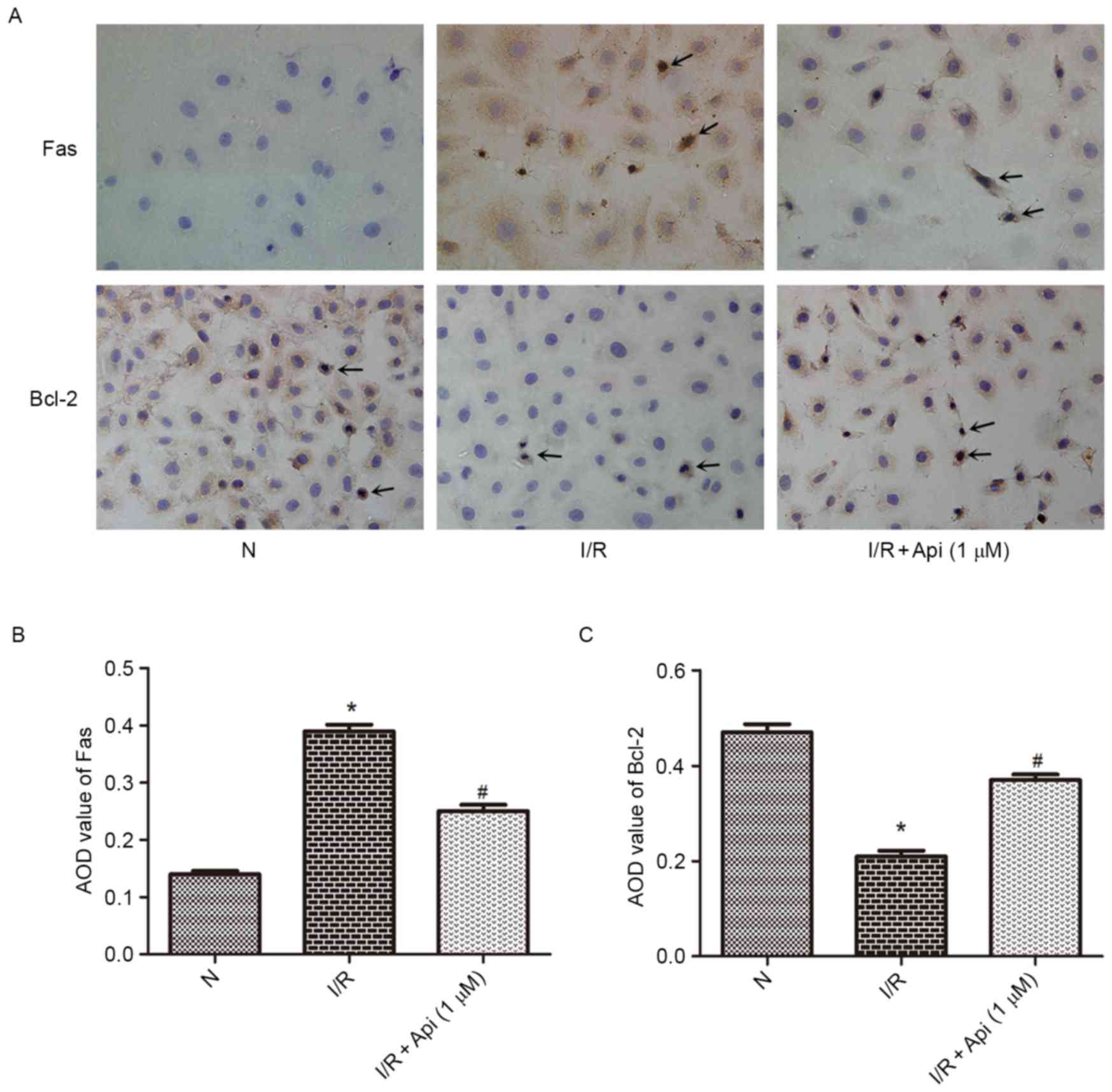|
1
|
Jang HR, Ko GJ, Wasowska BA and Rabb H:
The interaction between ischemia-reperfusion and immune responses
in the kidney. J Mol Med (Berl). 87:859–864. 2009. View Article : Google Scholar : PubMed/NCBI
|
|
2
|
Sementilli A and Franco M: Renal acute
cellular rejection: Correlation between the immunophenotype and
cytokine expression of the inflammatory cells in acute
glomerulitis, arterial intimitis, and tubulointerstitial nephritis.
Transplant Proc. 42:1671–1676. 2010. View Article : Google Scholar : PubMed/NCBI
|
|
3
|
Di Nardo M, Ficarella A, Ricci Z, Luciano
R, Stoppa F, Picardo S, Picca S, Muraca M and Cogo P: Impact of
severe sepsis on serum and urinary biomarkers of acute kidney
injury in critically ill children: An observational study. Blood
Purif. 35:172–176. 2013. View Article : Google Scholar : PubMed/NCBI
|
|
4
|
Levy EM, Viscoli CM and Horwitz RI: The
effect of acute renal failure on mortality. A cohort analysis.
JAMA. 275:1489–1494. 1996. View Article : Google Scholar : PubMed/NCBI
|
|
5
|
Santos WJ, Zanetta DM, Pires AC, Lobo SM,
Lima EQ and Burdmann EA: Patients with ischaemic, mixed and
nephrotoxic acute tubular necrosis in the intensive care unit-a
homogeneous population? Crit Care. 10:R682006. View Article : Google Scholar : PubMed/NCBI
|
|
6
|
Jia Y, Zhao J, Liu M, Li B, Song Y, Li Y,
Wen A and Shi L: Brazilin exerts protective effects against renal
ischemia-reperfusion injury by inhibiting the NF-κB signaling
pathway. Int J Mol Med. 38:210–216. 2016. View Article : Google Scholar : PubMed/NCBI
|
|
7
|
Birt DF, Hendrich S and Wang W: Dietary
agents in cancer prevention: Flavonoids and isoflavonoids.
Pharmacol Ther. 90:157–177. 2001. View Article : Google Scholar : PubMed/NCBI
|
|
8
|
Patel D, Shukla S and Gupta S: Apigenin
and cancer chemoprevention: Progress, potential and promise
(review). Int J Oncol. 30:233–245. 2007.PubMed/NCBI
|
|
9
|
Nicholas C, Batra S, Vargo MA, Voss OH,
Gavrilin MA, Wewers MD, Guttridge DC, Grotewold E and Doseff AI:
Apigenin blocks lipopolysaccharide-induced lethality in vivo and
proinflammatory cytokines expression by inactivating NF-kappaB
through the suppression of p65 phosphorylation. J Immunol.
179:7121–7127. 2007. View Article : Google Scholar : PubMed/NCBI
|
|
10
|
Tsalkidou EG, Tsaroucha AK, Chatzaki E,
Lambropoulou M, Papachristou F, Trypsianis G, Pitiakoudis M, Vaos G
and Simopoulos C: The effects of apigenin on the expression of
Fas/FasL apoptotic pathway in warm liver ischemia-reperfusion
injury in rats. Biomed Res Int. 2014:1572162014. View Article : Google Scholar : PubMed/NCBI
|
|
11
|
Brunner T, Mogil RJ, LaFace D, Yoo NJ,
Mahboubi A, Echeverri F, Martin SJ, Force WR, Lynch DH, Ware CF, et
al: Cell-autonomous Fas (CD95)/Fas-ligand interaction mediates
activation-induced apoptosis in T-cell hybridomas. Nature.
373:441–444. 1995. View
Article : Google Scholar : PubMed/NCBI
|
|
12
|
Zhao J, Duan S, Zhou J, Sun R, Zhang L and
Wang D: Mild hypothermia reduces expression of Fas/FasL and MMP-3
after cerebral ischemia-reperfusion in rats. Iran J Basic Med Sci.
17:454–459. 2014.PubMed/NCBI
|
|
13
|
Del RM, Imam A, DeLeon M, Gomez G, Mishra
J, Ma Q, Parikh S and Devarajan P: The death domain of kidney
ankyrin interacts with Fas and promotes Fas-mediated cell death in
renal epithelia. J Am Soc Nephrol. 15:41–51. 2004. View Article : Google Scholar : PubMed/NCBI
|
|
14
|
Erkan E, Garcia CD, Patterson LT, Mishra
J, Mitsnefes MM, Kaskel FJ and Devarajan P: Induction of renal
tubular cell apoptosis in focal segmental glomerulosclerosis: Roles
of proteinuria and Fas-dependent pathways. J Am Soc Nephrol.
16:398–407. 2005. View Article : Google Scholar : PubMed/NCBI
|
|
15
|
Gahl RF, Dwivedi P and Tjandra N: Bcl-2
proteins bid and bax form a network to permeabilize the
mitochondria at the onset of apoptosis. Cell Death Dis.
7:e24242016. View Article : Google Scholar : PubMed/NCBI
|
|
16
|
Wang Y, Wang W and Qiu E: Protection of
oxidative stress induced apoptosis in osteosarcoma cells by
dihydromyricetin through down-regulation of caspase activation and
up-regulation of BcL-2. Saudi J Biol Sci. 24:837–842. 2017.
View Article : Google Scholar : PubMed/NCBI
|
|
17
|
Tsujimoto Y and Shimizu S: Bcl-2 family:
Life-or-death switch. FEBS Lett. 466:6–10. 2000. View Article : Google Scholar : PubMed/NCBI
|
|
18
|
Furuichi K, Kokubo S, Hara A, Imamura R,
Wang Q, Kitajima S, Toyama T, Okumura T, Matsushima K, Suda T, et
al: Fas ligand has a greater impact than TNF-α on apoptosis and
inflammation in ischemic acute kidney injury. Nephron Extra.
2:27–38. 2012. View Article : Google Scholar : PubMed/NCBI
|
|
19
|
Zhu MX, Ran B, Feng ZQ and Pan QW: Effects
of Rb1 and Rg1 on the expression of Bcl-2, Bax in apoptosis of HK-2
cells induced by the serum of kidney ischemia/reperfusion. Zhongguo
Ying Yong Sheng Li Xue Za Zhi. 25:496–499. 2009.(In Chinese).
PubMed/NCBI
|
|
20
|
Wang J, Su B, Zhu H, Chen C and Zhao G:
Protective effect of geraniol inhibits inflammatory response,
oxidative stress and apoptosis in traumatic injury of the spinal
cord through modulation of NF-κB and p38 MAPK. Exp Ther Med.
12:3607–3613. 2016. View Article : Google Scholar : PubMed/NCBI
|
|
21
|
Vogt M, Bauer MK, Ferrari D and
Schulze-Osthoff K: Oxidative stress and hypoxia/reoxygenation
trigger CD95 (APO-1/Fas) ligand expression in microglial cells.
FEBS Lett. 429:67–72. 1998. View Article : Google Scholar : PubMed/NCBI
|
|
22
|
Chang WT, Hsieh BS, Cheng HL, Lee KT and
Chang KL: Progesterone augments epirubicin-induced apoptosis in
HA22T/VGH cells by increasing oxidative stress and upregulating
Fas/FasL. J Surg Res. 188:432–441. 2014. View Article : Google Scholar : PubMed/NCBI
|
|
23
|
Bussuan LA, Fagundes DJ, Marks G, Bussuan
PM and Teruya R: The role of Fas ligand protein in the oxidative
stress induced by azoxymethane on crypt colon of rats. Acta Cir
Bras. 25:501–506. 2010. View Article : Google Scholar : PubMed/NCBI
|
|
24
|
Jablonski P, Howden BO, Rae DA, Birrell
CS, Marshall VC and Tange J: An experimental model for assessment
of renal recovery from warm ischemia. Transplantation. 35:198–204.
1983. View Article : Google Scholar : PubMed/NCBI
|
|
25
|
Gianello P, Squifflet JP, Carlier M,
Lambotte L, Ketelslegers JM and Alexandre GP: Atrial natriuretic
factor: A protective role after acute renal ischemia? Is there room
for it in kidney transplantation? Transpl Int. 3:41–46. 1990.
View Article : Google Scholar : PubMed/NCBI
|
|
26
|
Gobé G, Willgoss D, Hogg N, Schoch E and
Endre Z: Cell survival or death in renal tubular epithelium after
ischemia-reperfusion injury. Kidney Int. 56:1299–1304. 1999.
View Article : Google Scholar : PubMed/NCBI
|
|
27
|
Ameisen JC: On the origin, evolution, and
nature of programmed cell death: A timeline of four billion years.
Cell Death Differ. 9:367–393. 2002. View Article : Google Scholar : PubMed/NCBI
|
|
28
|
Hanlon MG, Gacis ML, Kakakios AM and
Kilham H: Investigation of suspected deficient Fas-mediated
apoptosis in a father and son. Cytometry. 43:195–198. 2001.
View Article : Google Scholar : PubMed/NCBI
|
|
29
|
Kiechle FL and Zhang X: The postgenomic
era: Implications for the clinical laboratory. Arch Pathol Lab Med.
126:255–262. 2002.PubMed/NCBI
|
|
30
|
Markström E, Svensson ECh, Shao R,
Svanberg B and Billig H: Survival factors regulating ovarian
apoptosis-dependence on follicle differentiation. Reproduction.
123:23–30. 2002. View Article : Google Scholar : PubMed/NCBI
|
|
31
|
Müllauer L, Gruber P, Sebinger D, Buch J,
Wohlfart S and Chott A: Mutations in apoptosis genes: A
pathogenetic factor for human disease. Mutat Res. 488:211–231.
2001. View Article : Google Scholar : PubMed/NCBI
|
|
32
|
Yuan J and Yankner BA: Apoptosis in the
nervous system. Nature. 407:802–809. 2000. View Article : Google Scholar : PubMed/NCBI
|
|
33
|
Hashemi M: The study of pentoxifylline
drug effects on renal apoptosis and BCL-2 gene expression changes
following ischemic reperfusion injury in rat. Iran J Pharm Res.
13:181–189. 2014.PubMed/NCBI
|
|
34
|
Nilsson L, Madsen K, Krag S, Frøkiær J,
Jensen BL and Nørregaard R: Disruption of cyclooxygenase type 2
exacerbates apoptosis and renal damage during obstructive
nephropathy. Am J Physiol Renal Physiol. 309:F1035–F1048. 2015.
View Article : Google Scholar : PubMed/NCBI
|
|
35
|
Li H, Sun JJ, Chen GY, Wang WW, Xie ZT,
Tang GF and Wei SD: Carnosic acid nanoparticles suppress liver
ischemia/reperfusion injury by inhibition of ROS, Caspases and
NF-κB signaling pathway in mice. Biomed Pharmacother. 82:237–246.
2016. View Article : Google Scholar : PubMed/NCBI
|
|
36
|
Liu A, Huang L, Fan H, Fang H, Yang Y, Liu
S, Hu J, Hu Q, Dirsch O and Dahmen U: Baicalein pretreatment
protects against liver ischemia/reperfusion injury via inhibition
of NF-κB pathway in mice. Int Immunopharmacol. 24:72–79. 2015.
View Article : Google Scholar : PubMed/NCBI
|
|
37
|
Zweier JL and Talukder MA: The role of
oxidants and free radicals in reperfusion injury. Cardiovasc Res.
70:181–190. 2006. View Article : Google Scholar : PubMed/NCBI
|
|
38
|
Lemasters JJ: V. Necrapoptosis and the
mitochondrial permeability transition: Shared pathways to necrosis
and apoptosis. Am J Physiol. 276:G1–G6. 1999.PubMed/NCBI
|
|
39
|
Bruno A, Siena L, Gerbino S, Ferraro M,
Chanez P, Giammanco M, Gjomarkaj M and Pace E: Apigenin affects
leptin/leptin receptor pathway and induces cell apoptosis in lung
adenocarcinoma cell line. Eur J Cancer. 47:2042–2051. 2011.
View Article : Google Scholar : PubMed/NCBI
|
|
40
|
Chen C, He H, Luo Y, Zhou M, Yin D and He
M: Involvement of Bcl-2 signal pathway in the protective effects of
apigenin on Anoxia/Reoxygenation-induced myocardium injury. J
Cardiovasc Pharmacol. 67:152–163. 2016. View Article : Google Scholar : PubMed/NCBI
|
|
41
|
Walls KC, Ghosh AP, Ballestas ME, Klocke
BJ and Roth KA: bcl-2/Adenovirus E1B 19-kd interacting protein 3
(BNIP3) regulates hypoxia-induced neural precursor cell death. J
Neuropathol Exp Neurol. 68:1326–1338. 2009. View Article : Google Scholar : PubMed/NCBI
|
|
42
|
Meier P, Finch A and Evan G: Apoptosis in
development. Nature. 407:796–801. 2000. View Article : Google Scholar : PubMed/NCBI
|
|
43
|
Lam M, Dubyak G, Chen L, Nuñez G, Miesfeld
RL and Distelhorst CW: Evidence that BCL-2 represses apoptosis by
regulating endoplasmic reticulum-associated Ca2+ fluxes. Proc Natl
Acad Sci USA. 91:pp. 6569–6573. 1994, View Article : Google Scholar : PubMed/NCBI
|
|
44
|
Jin GF, Hurst JS and Godley BF: Hydrogen
peroxide stimulates apoptosis in cultured human retinal pigment
epithelial cells. Curr Eye Res. 22:165–173. 2001. View Article : Google Scholar : PubMed/NCBI
|
|
45
|
Tsalkidou EG, Tsaroucha AK, Chatzaki E,
Lambropoulou M, Papachristou F, Trypsianis G, Pitiakoudis M, Vaos G
and Simopoulos C: The effects of apigenin on the expression of
Fas/FasL apoptotic pathway in warm liver ischemia-reperfusion
injury in rats. Biomed Res Int. 2014:1572162014. View Article : Google Scholar : PubMed/NCBI
|
|
46
|
Malhi H, Gores GJ and Lemasters JJ:
Apoptosis and necrosis in the liver: A tale of two deaths?
Hepatology. 43 2 Suppl 1:S31–S44. 2006. View Article : Google Scholar : PubMed/NCBI
|
|
47
|
Mor G, Straszewski S and Kamsteeg M: Role
of the Fas/Fas ligand system in female reproductive organs:
Survival and apoptosis. Biochem Pharmacol. 64:1305–1315. 2002.
View Article : Google Scholar : PubMed/NCBI
|
|
48
|
Ortiz A, Lorz C and Egido J: The Fas
ligand/Fas system in renal injury. Nephrol Dial Transplant.
14:1831–1834. 1999. View Article : Google Scholar : PubMed/NCBI
|
|
49
|
Hsu SC, Gavrilin MA, Tsai MH, Han J and
Lai MZ: p38 mitogen-activated protein kinase is involved in Fas
ligand expression. J Biol Chem. 274:25769–25776. 1999. View Article : Google Scholar : PubMed/NCBI
|



